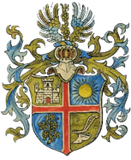Viticulture tradition
We are a family winery and firmly rooted in the tradition of wine growing on the Middle Rhine. In select locations in Oberwesel, the small winery cultivates the typical Mittelrheinriesling and Burgundy vines in selective manual work. Our wines are available on the internet and at wine festivals.
> back
Steillage Terroir
The Rhine has buried itself in the course of millions of years in the Rhenish Slate Mountains. The sun-soaked soils store heat energy during the day, which they release from the slate floors after sunset. The valley slopes provide a fast cold air outflow in the morning. In addition to the climate, the condition of the soil is one of the main criteria for the characteristics of a wine. The soils are responsible for the characteristics and thus often for the distinctiveness of the plants. The weathered slates, which store the water in the earth, give the wine a light minerality.
> back
Valley of Loreley
The Loreley Rock has always inspired travelers. The rustling of the former shallows and cliffs of the breaking Rhine flow sought explanations and myths and legends arose. The best known of the girl with long blond hair who brushed her golden hair on the rock on the Rhine and charmed the sailors with her lovely song and her face, that instead of paying attention to the dangerous current, looked up to her. In the end, the grace of the Loreley cost the lives of many boaters. In the 19th century, the Rhine romantics discovered the beauty and uniqueness of the Rhine Valley as a landscape as if from a picture book. It described the picturesque beauty in poetry and in painting, the romantic navigation on the Rhine began and brought as early as 1850 many tourists in the valley. Oberwesel has its origins in Celtic-Roman times, received the city rights in 1180 and lies with its pretty half-timbered houses on the picturesque market square on the left bank of the Rhine between the neighboring St. Goar and Bacharach. The city has the oldest, largest and best preserved partly walkable city wall on the Rhine, 16 towers are still preserved, some even inhabited. Schönburg, which was built in the 12th century, towers over the city, outstanding are the early Gothic churches Liebfrauen with the gold altar and the St. Martin's Church, whose tower was built as a defense tower.
> back
UNESCO world heritage
The uniqueness of the cultural landscape and the extraordinary wealth of cultural heritage has been recognized by UNESCO. The route from Bingen / Rüdesheim to Koblenz has been given special protection for humanity: As one of the most important trade routes in Europe, the Middle Rhine Valley has enabled cultural exchange between the Mediterranean region and northern Europe for two millennia. The Middle Rhine Valley is an exceptional, organically grown cultural landscape whose current image is determined by its geology and geological appearance and by the human interventions, such as settlements, transport infrastructure and land use, which have shaped the landscape during the last 2000 years. The Middle Rhine Valley is an outstanding example of a growing traditional lifestyle and traffic in a narrow river valley. Terracing the steep slopes has shaped the landscape during the last two thousand years. However, this form of land use is threatened by socio-economic changes of the present. see. Admission criteria World Heritage Sites Upper Middle Rhine Valley of the UNESCO Commission
> back


